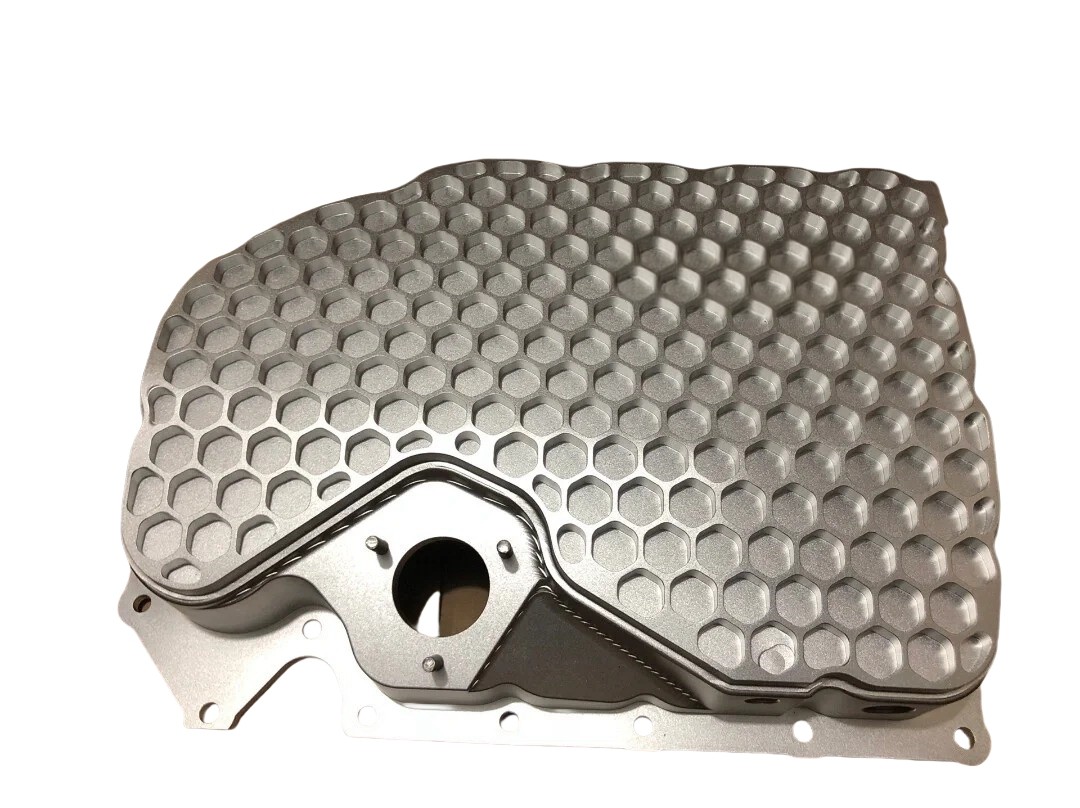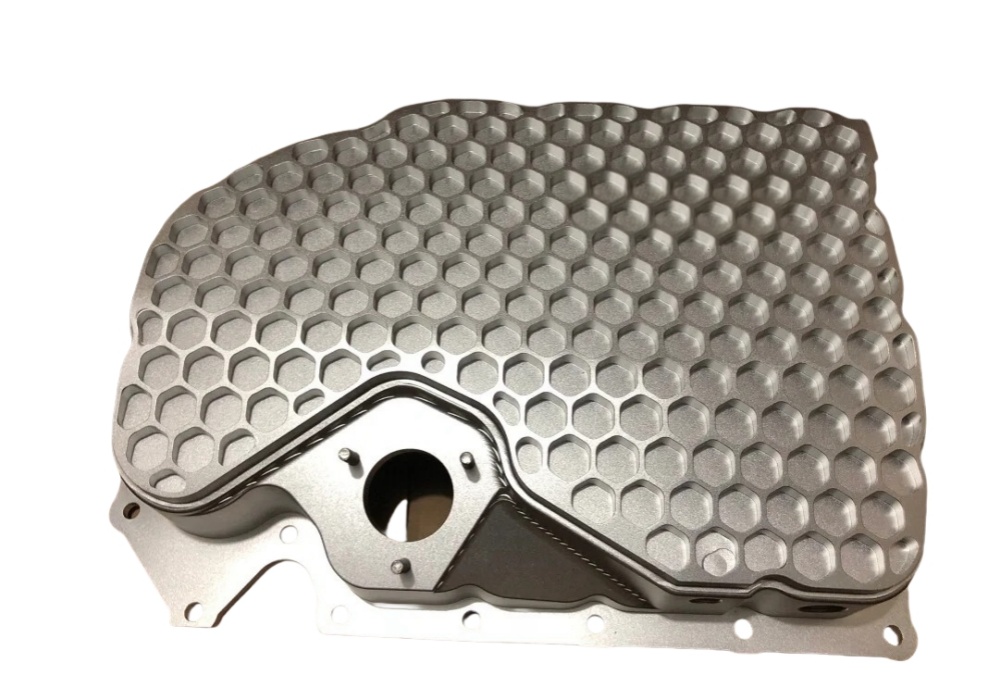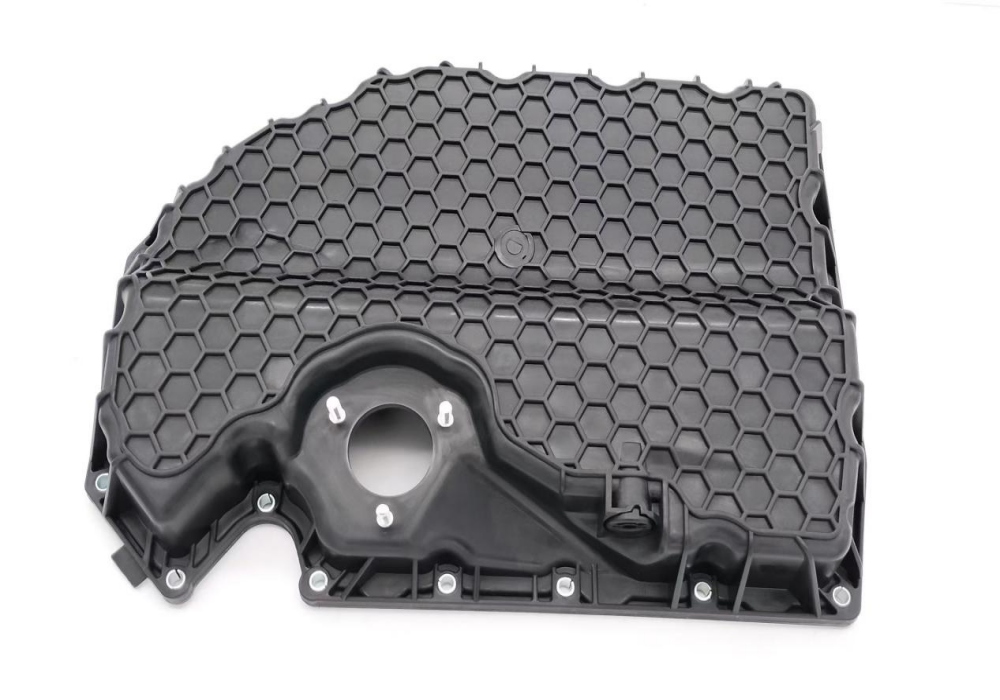How to choose?Aluminum Alloy Oil Pan or Plastic Oil Pan

The oil pan is an essential component of an engine’s lubrication system, serving multiple functions including oil storage, heat dissipation, and contaminant settling. In response to the increasing demand for light weighting and cost efficiency, aluminum alloy and polymer composite (plastic) oil pans have gradually supplanted traditional cast iron models, becoming the predominant choice in the market.
1.Material Properties and Manufacturing Processes
A. Aluminum Alloy Oil Pan
– Material Composition
Typically made from ADC12 (aluminum-silicon-copper alloy) or A356 (aluminum-silicon-magnesium alloy), with a silicon content of 8%~12%, ensuring excellent casting fluidity.
– Manufacturing Process
High-pressure die casting (HPDC) or low-pressure casting, with surface treatments like anodizing or coating to enhance corrosion resistance.
– Density and Weight
Density is approximately 2.68 g/cm³, with a typical oil pan weight of 3.5~5 kg (for a 1.5L engine).

Aluminum Alloy Engine Oil Pan for Golf
B. Plastic Oil Pan
– Material Composition
Primarily PA6 (nylon 6) or PA66 reinforced with 30%~50% glass fiber (GF) (e.g., PA6-GF30), with some high-end variants incorporating carbon fiber.
– Manufacturing Process
Injection molding, which allows for short production cycles and the integration of complex structures (e.g., built-in baffles).
– Density and Weight
Density is approximately 1.35 g/cm³, making it 40%~50% lighter than aluminum by volume, with a typical weight of 1.8~2.8 kg.

Plastic Engine Oil Pan for Golf
2. Performance Under Real-World Conditions
A. Heat Dissipation Efficiency
Aluminum’s high thermal conductivity allows rapid heat transfer from the oil, reducing oil temperature by 8~12℃ under aggressive driving conditions (oil temperature >110℃) when paired with cooling fins.
Plastic relies on oil circulation for heat dissipation, potentially increasing oil temperature by 10~15℃ under prolonged high-load conditions, necessitating auxiliary cooling systems.
B. NVH (Noise, Vibration, and Harshness)
Plastic’s damping properties can reduce engine noise transmission by 3~5 dB (A-weighted), particularly noticeable in the 2000~4000 RPM range.
Aluminum requires additional rubber vibration isolators to avoid amplifying high-frequency mechanical noise.
C. Impact Resistance and Durability
Aluminum is prone to permanent deformation from stone impacts or underbody collisions, with a critical impact energy of 50~80 J (simulating 25 km/h collisions).
Plastic oil pans can absorb up to 80% of impact energy without cracking, but long-term exposure to high temperatures (>150℃) may accelerate creep.
D. Sealing Reliability
Aluminum’s thermal expansion coefficient is closer to that of the engine block (typically cast iron or aluminum), resulting in a sealing surface offset of 0.1~0.3 mm at high temperatures.
Plastic’s thermal expansion coefficient is 2~3 times higher, requiring flexible sealants or dynamic compensation structures (e.g., corrugated flanges).
4. Selection Strategy
A. Aluminum Alloy Oil Pans
– High-performance/racing cars: Must withstand sustained high oil temperatures (e.g., turbocharged engines with oil temperatures often reaching 130℃).
– Off-road/unpaved roads: Higher resistance to underbody impacts outweighs lightweighting; aluminum can be repaired after deformation.
– Long-term use: Aluminum typically lasts over 500,000 km, while plastic may become brittle after 150,000~200,000 km.
B:Plastic Oil Pans
– Urban commuter vehicles: Reducing weight by 4 kg can lower fuel consumption by approximately 0.1L/100km (NEDC cycle).
– Hybrid/electric vehicles: Stringent NVH requirements make plastic ideal for optimizing acoustic performance.
– Cost-sensitive models: Injection molding costs 30%~50% less than die casting, offering significant production cost advantages.
C:Hybrid Solutions
Some manufacturers adopt hybrid designs: a plastic main body with an embedded aluminum guard plate (e.g., Mercedes-Benz M254 engine), balancing light weighting and protection.
5. Industry Trends and Innovations
A:Material Advancements
– Aluminum: Nano-ceramic coatings (e.g., Al₂O₃-TiO₂) can increase surface hardness to HV800, improving wear resistance by 3x.
– Plastic: Carbon fiber-reinforced PA66 (CFRP) can raise the heat deflection temperature to 220℃ and tensile strength beyond 200 MPa.
B:Structural Innovations
3D-printed oil pans enable topology optimization. For example, BMW i8’s aluminum oil pan achieved a 22% weight reduction through lattice design while maintaining equivalent stiffness.
The competition between aluminum alloy and plastic oil pans is essentially a trade-off among thermal management, light weighting, and cost. For average users, plastic is preferable for urban driving due to lower operating costs. However, for performance-oriented or off-road users, aluminum remains a reliable choice. As material technologies advance, the performance gap between the two will narrow, but scenario-based selection logic will remain relevant for the foreseeable future.

